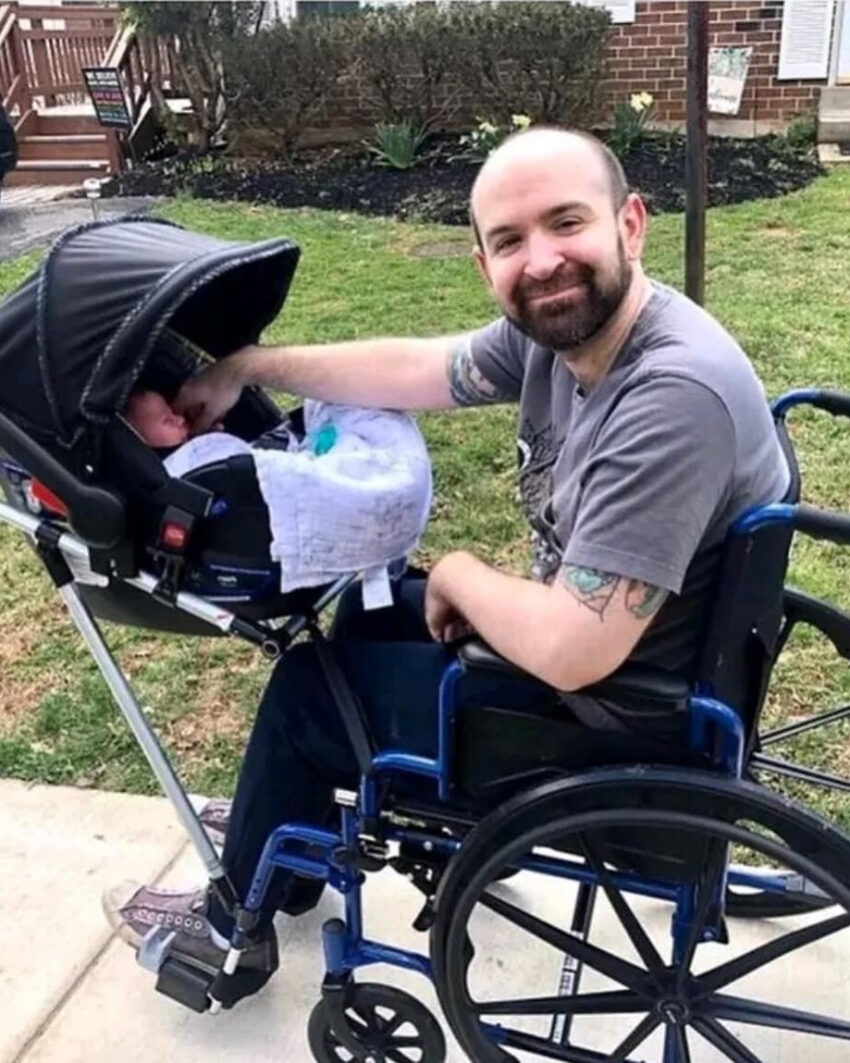When Jeremy King found out he was going to be a father, he was filled with joy… and a quiet fear.
Back in 2017, Jeremy, a 37-year-old man from Maryland, underwent brain surgery to remove a cancerous tumor “about the size of a baseball.” The surgery saved his life—but it changed everything. Mobility became a daily challenge. Speech was slower. And he now relied on a wheelchair.
So when he and his wife, Chelsie King, learned in June 2020 that they were expecting their first child, their happiness was quickly followed by a difficult question:
“How are we going to do this?”
“How can Jeremy ever take the baby out for a walk?”
For many parents, strolling with your child in the park is a simple joy. For Jeremy, it felt impossible.
Chelsie, a high school teacher, shared Jeremy’s situation with her students in an engineering class—not to ask for help, but simply to show the challenges people face and how design can solve real problems. But her students didn’t just listen.
They got to work.
Ten of them spent months researching, designing, and building a custom attachment—something that could connect a baby stroller safely to a wheelchair. It had to be stable. Easy to use. Safe for the child.
And they did it.
The day Jeremy first took his baby out for a walk, pushing the stroller with his own wheelchair, was a day he’ll never forget. For the first time, he could take his child out on his own. No help. No compromise. Just a father, his baby, and a quiet street.
For the students, it wasn’t just an engineering project. It was a human story. A lesson in empathy. A reminder that sometimes, the simplest ideas—powered by kindness—can change someone’s world.

